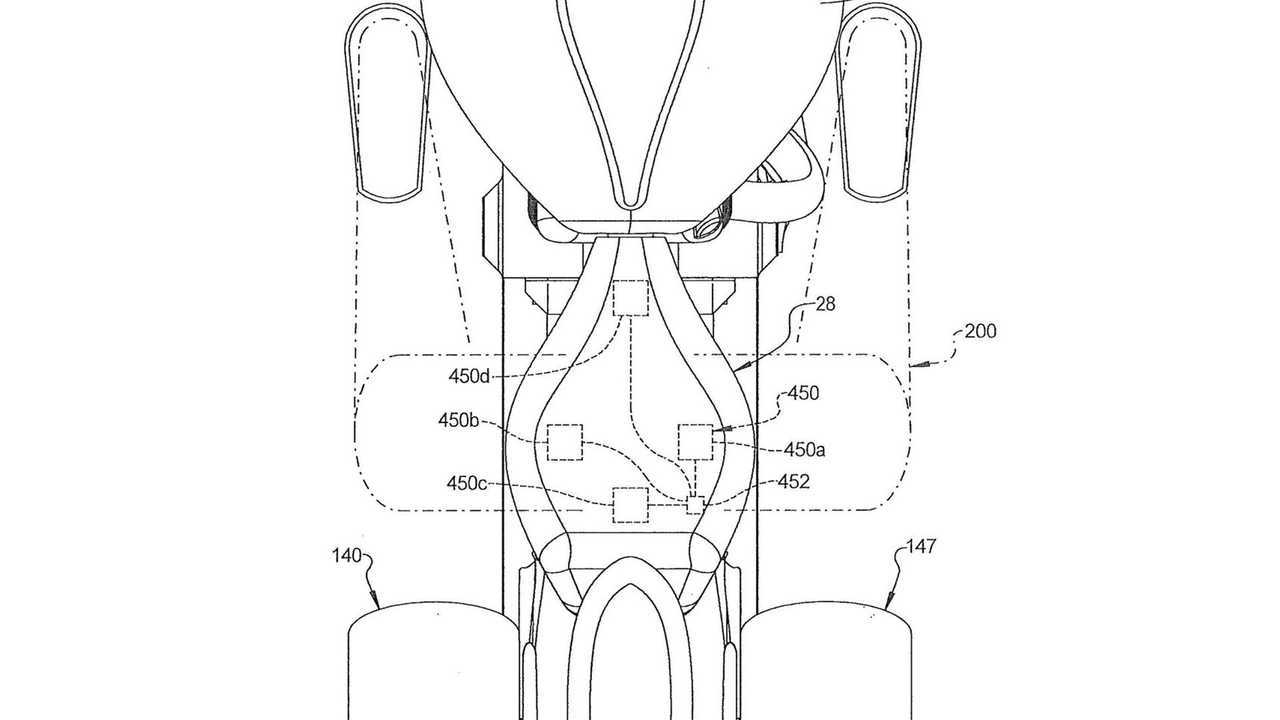Indian Evolves Adaptive Cruise Control Systems In Latest Patent
2021 marked the first year that motorcycle manufacturers equipped flagship models with adaptive cruise control. From Ducati’s Multistrada V4 S to KTM’s 1290 Super Adventure, heavyweight adventure touring machines spearheaded the charge. Despite the apparent benefits to the V-twin touring market, Harley-Davidson and Indian Motorcycle have yet to release a radar-assisted system.
The Motor Company patented a group-friendly version in August, 2019, and followed up with a radar-equipped braking system in 2021, but we haven’t seen the tech on a Hog yet. Now, Indian is joining the patent party with a robust design consisting of three radar units, six cameras, and an under-seat haptic response system.
The pair of U.S. patents position the front-facing radar just below the headlight, a common location for today’s adaptive cruise control tourers. However, only Ducati has implemented a rear-facing radar for the Multistrada V4’s new blind-spot detection system. Indian plans to do one better by stashing two radars at the rear of both saddlebags.
The patents also illustrate a camera positioned beside the fairing-mounted radar for front-facing surveillance. Indian’s design dedicates more resources astern, however, with two side-facing cameras bolted to the top of the engine crash bars. Out back, two pannier-mounted cameras and one last camera stashed in the taillight account for the vehicle’s stern.
The extensive equipment may seem like overkill by today’s adaptive cruise control standards, but Indian’s patents go far beyond the current capabilities of the Multistrada and 1290 Super Adventure. The proposed interface would allow users to set following distance based on vehicle type (semis, trucks, cars, and motorcycles). That feature is particularly valuable for motorcyclists, as the rider can set closer following distances with fellow group riders while keeping four-wheeled threats at bay.

In addition to the customizable cruise settings, the system alerts riders to potentially dangerous rear-approaching vehicles through its haptic seat. Four vibration motors mounted under each corner of the saddle communicate the direction of the threat. Similar to Ducati’s current blind-spot detection feature, the patent includes passenger-facing indicators as well.
In tandem with the haptic and blind-spot systems, the Indian design also tries to gain the attention of the rear-approaching vehicle with three flashes of the hazard lights. If the driver doesn’t respond to the warnings, the system sounds the horn and illuminates the brake light repeatedly.
While the patents primarily focus on Indian’s Roadmaster model, the documents also illustrate a rudimentary version for the Scout. While the developments are exciting, we wouldn’t be surprised if the breadth of the system requires further refinement. Whether we see Indian’s adaptive cruise control design on its 2022 models or not, it’s interesting to see the American V-twin producer push the technology even further.

No comments